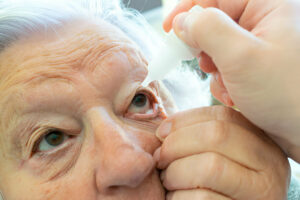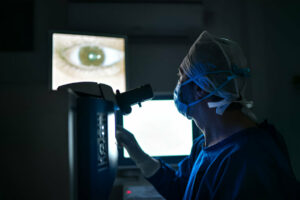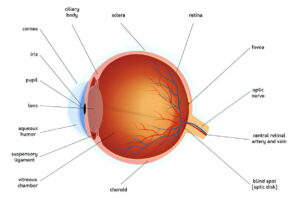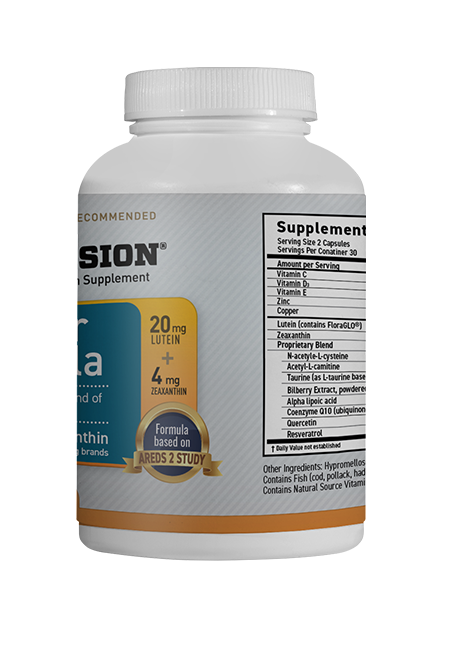Cataract surgery is a routine procedure that results in improved vision. The surgery usually occurs under local anesthetic for minimal discomfort.
Home Patients often leave with a protective shield in place to reduce the risk of accidentally rubbing or scratching the eye, while any sensation of grittiness or sand in their eye usually eases with Tylenol treatment.
The Day of Surgery
If you are considering cataract surgery, your doctor will conduct a painless ultrasound test to measure the size and shape of your eye, which helps determine which lens implant would best meet your needs. Most cataract patients opt for intraocular lens implants which focus light onto the back of their eye for improved vision; though you won’t be able to see or feel this lens it will become part of you forever.
On the day of surgery, you will take eyedrops to dilate your pupil before receiving local anesthetics and sedatives to numb your eye area. The procedure typically lasts about an hour; your surgeon will use a tiny incision to remove cloudy lenses before implanting clear artificial lenses into each eye.
Once your surgery is completed, you’ll rest in the recovery area before returning home depending on how you feel. While recovering, it is essential to wear your protective shield as directed during this phase in order to minimise risk from unintended rubbing or touching of the eye, and also receive medications to prevent infection, reduce inflammation and control eye pressure.
Your lifestyle should return to normal within one week after surgery; however, it is common to experience glare and halos around lights at first. Your vision may also fluctuate; therefore it is recommended that you wait at least until your vision stabilizes before driving again. It is wise to avoid swimming pools and dusty environments as these can irritate the eye further. Follow-up appointments will be scheduled so we can monitor healing processes and address any concerns as they arise.
The First Few Days
After surgery, you will spend some time in the recovery area where nurses will monitor you to ensure your safety and comfort. Your surgeon may prescribe eye drop medication to control inflammation and avoid infection as well as answer any queries or provide answers for any concerns that may arise.
As your eye heals, you should expect your vision to become temporarily blurry for several days after surgery. This is expected as you’ll now be viewing through a clear lens instead of one with yellow- or brown-tinted cataract cells blocking out light prior to the operation. Glare or halos around lights may occur at times during this phase; just remember that as long as you continue with drops prescribed by your physician for recovery purposes, your vision will improve over time.
During the initial few days, it is best to refrain from touching or rubbing your eyes as this could result in injury. Furthermore, sleeping with a protective shield for one week should help avoid accidental contact between eyeballs; additionally eye drops should be applied according to instructions in order to control inflammation and minimize irritation.
After your initial post-operative period is complete, most daily activities should resume within a day or two. Be sure to continue using eye drops as directed by your physician and keep the area moist to speed healing. Follow-up appointments with your physician are typically set up a few days, one week and six months post-surgery; during these appointments they’ll measure eye pressure and examine visual acuity.
The First Week
Cataracts impair how we see, making daily activities such as driving or using the computer more challenging. Luckily, there is an effective treatment for cataracts: surgery which restores clear vision while decreasing dependence on glasses.
Cataract surgery involves making a small incision in your eye to extract and replace cloudy lenses with artificial ones made of plastic, an outpatient process which can significantly increase quality of life.
Before beginning, your eye doctor will administer drops to dilate your pupil and numb the area to provide comfort during surgery. The procedure only takes minutes and can be conducted as an outpatient.
Following surgery, your doctor may advise that you rest and refrain from strenuous activities for one week after. It is crucial to follow this advice, as rubbing can damage new lenses or cause infection; additionally you may be told to sleep with an eye shield on at night to protect from injury or pressure on the eyes.
After surgery, you should experience improved vision with reduced glare or light sensitivity. However, you should contact your eye doctor immediately if you experience pain, itching, “floaters”, flashing lights or any other unusual symptoms that require medical intervention.
Make sure to use all prescribed medications as directed by your physician, including wearing an eye shield while sleeping for at least a week or more in order to protect the eyes from dust and debris exposure. Also remember to continue taking anti-inflammatory and antibiotic eyedrops according to instructions, while reading or watching television while wearing the shield.
The First Month
After surgery, patients typically remain in their doctor’s office for one hour following to ensure eye pressure doesn’t spike again. Once done, patients are usually free to go home to rest and continue using eye drops as instructed.
Most people should return to normal activity, although they should avoid activities that require bending over or exerting too much pressure on the eye, including activities that involve bending forward and exerting too much strain. They should also take extra care not to rub their eye; this includes avoiding dust or dirt accumulation near it while cleaning face, hair or eating food near it.
Your ophthalmologist will place and secure a lightweight protective shield over the eye in which surgery was performed, to prevent accidental rubbing or bumping from causing injury. It may need to remain on for at least two weeks following surgery – even while sleeping.
As part of cataract surgery, your surgeon uses a technique known as phacoemulsification (pronounced FAK-oh) to extract your cloudy lens and replace it with an artificial one. In this procedure, they make a tiny incision in your cornea before inserting an ultrasound probe that breaks up the lens into pieces for easier removal; afterwards they suction away these fragments before closing up their small incision.
After cataract surgery, your vision should start improving within several days – though initially it may still appear blurry as your eye adjusts to seeing through a clear lens instead of cloudy one. Some individuals report seeing colors become brighter due to yellow or brown tinted cataracts muting their appearance – this effect should eventually dissipate as your eye heals; to assess exactly how your vision improves after cataract surgery schedule a follow-up visit with your ophthalmologist and schedule follow-up visits as required.
The First Six Months
Cataract surgery is an increasingly safe, common, and relatively swift medical procedure. Still, like any medical procedure it may be daunting for patients; fortunately, there are steps they can take to help ease their fears and make this experience positive from start to finish.
Before beginning cataract surgery, your physician will administer eyedrops to dilate the pupil and local anesthetics to numb the area. Next, a thin incision will be made in which to extract the clouded lens and insert an artificial plastic one (in some cases, your surgeon may simply extract and remove the cataract without implanting an artificial replacement lens).
After surgery, you will remain at the surgical facility for several hours while nurses monitor you in the recovery room. At this point, it is a good time to ask any questions or voice any concerns with either your surgeon or surgical team.
Once released from the recovery room, your doctor will give you specific instructions about how to care for your eyes. Generally this involves applying eye drops as prescribed, following any postoperative care instructions at home and attending follow-up appointments as necessary.
Your doctor will also advise when it is appropriate for you to resume daily activities like bending over, showering/bathing and returning to work. Keep in mind that even if your vision improves immediately, healing of your eye may take several months or even years.
Many individuals will still require glasses for tasks such as reading, driving and watching television; however, laser vision correction procedures such as LASIK may reduce their need after cataract surgery. If you would like more information on how LASIK could reduce this need for glasses postoperatively, please reach out to our office and schedule a consultation appointment with Dr. Kirby.













